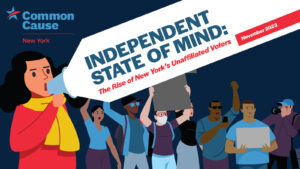
There are over 3.1 million registered voters in New York who are politically unaffiliated voters, voters who have chosen not to affiliate with any political party, and they are the second largest bloc of registered voters statewide. For context, the share of unaffiliated voters in New York is greater than the total number of voters in 29 other states. Unaffiliated voters represent 24% of the electorate and roughly a third live in New York City. In 2020, unaffiliated voters overtook Republicans as the second largest voting bloc mirroring the longstanding status quo in New York City.
As a long standing political and policy choice, New York has a closed primary system and is only one of nine states that still has a closed primary system. Only voters who affiliate with a political party are allowed to vote in that party’s primary election. For decades, this policy choice hasn’t been viewed as an urgent area of reform as most voters tended to affiliate with one of the two major political parties in the country.
However, as the number of unaffiliated voters has grown, the calls for primary election reform have only intensified. Despite their rising share of the statewide electorate, little public data exists on who these voters are, what motivates them and if they are even interested in voting in primaries at all.
The following data and analysis provides rich insight into who these voters are, what motivates them and how they see themselves in the political system. Our findings show unaffiliated voters would deepen their engagement in the political process if given the opportunity, and there is a viable path forward if there is the political will to do so.
This research and report was made possible by the very generous funding from The New York Community Trust. Our many thanks for their ongoing support and their vision for a better New York.
